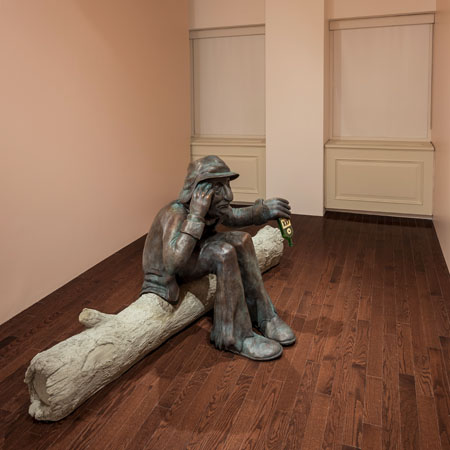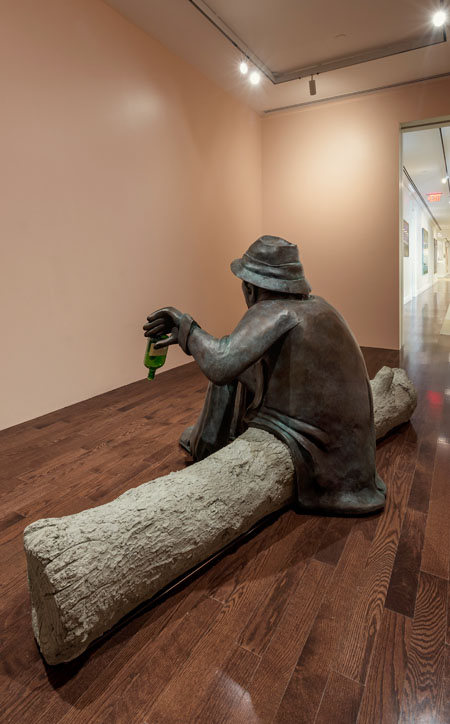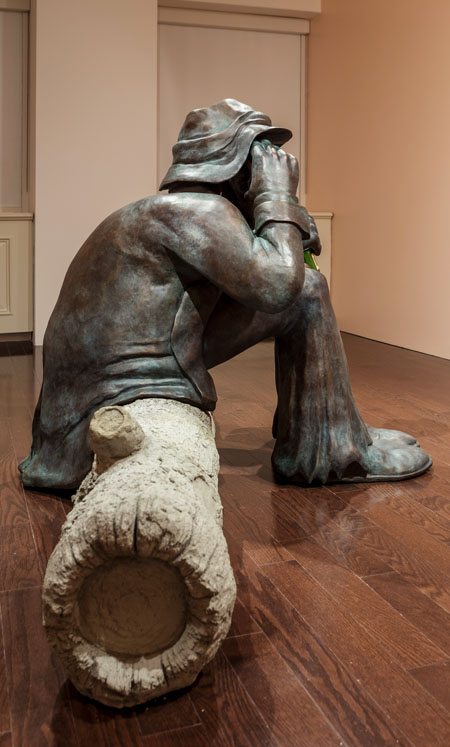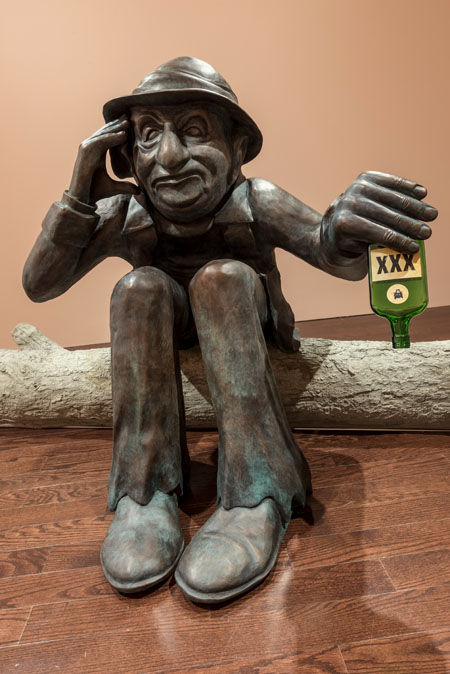
In 2001 Myfanwy MacLeod started to collect postcards featuring images of men drinking or drunk. The first card she purchased was from Paris. It’s a colour photograph by Yvon (born Pierre Yves Petit) of three tramps, or as the French call them, clochards, drinking on the banks of the Seine. This struck the artist as a strange choice of subject matter for a picture postcard one might buy on vacation. “Instead of a famous landmark it depicts real French social problems—homeless men drinking… It would be like making a picture postcard of Vancouver’s downtown Eastside with the caption ‘wish you were here.’ ”
MacLeod’s collection now includes over 150 postcards dating from the early 1900s to the mid-1960s, most of which are cruder and more overtly comical than Yvon’s candid street photographs. Colourful drawings portray the gamut of tropes and clichés associated with states of inebriation, picturing red-nosed, full-bellied revellers holding each other up as they totter down dark city streets after last call, drunks passed out while images of stars, bottles, scantily-clad women, or pink elephants swirl around their heads, and even scenes of the morning after hangover, where ice packs and bottles of Bromo-Seltzer figure prominently. Bearing captions like “Happy Daze!”, “I Am Certainly Seeing Things”, “Never Again!” and “The Last Drop”, they may have been sent by vacationers to friends and family back home just for fun or in the spirit of “Having a great time” and “I miss you so much I’m driven to drink.”
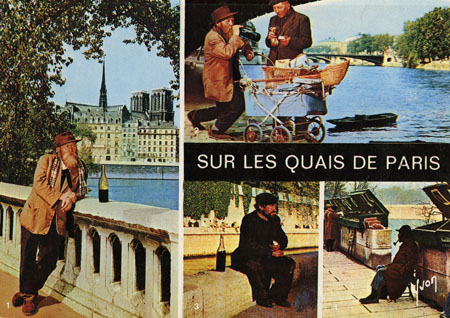
In their amusing use of exaggeration, innuendo and one-liners, these caricatures are akin to the vaudevillian traditions of W. C. Fields (1880–1946) or the gags and stand-up comedy of Henny Youngman (1906–1998) and Dean Martin (1917–1995). They are also indicative of a time when excessive drinking was regarded with more humour and tolerance than is often the case today, notwithstanding movies like The World’s End and The Hangover. Such renderings and the ideas that inform them have influenced the development of a series of significant installation and collage-based works created by MacLeod over the past decade.
Although her first work incorporating images of tipplers was made in 2001, around the same time as the Miss Moonshine exhibition at the Catriona Jefferies Gallery1, the subject became more of a focus after 2005, when MacLeod was invited to be Artist in Residence at the Glenfiddich Distillery in Scotland. Four years later, MacLeod drew on her love of the 1941 film Sullivan’s Travels by Preston Sturges and images from her collection of vintage postcards to create works aptly described as “journeying from figurative art to abstract form, and from social realist caricature to modernist conceit.” The large ink-jet print collage called The Drunkard’s Walk, or How Randomness Rules Our Lives,2 borrows its title from author and mathematical physicist Leonard Mlodinow’s 2008 book.3 The drunkard’s walk is the term used by scientists to describe the way atoms and sub-atomic particles move, colliding and rebounding off each other willy-nilly, like the erratic perambulations of inebriants. MacLeod is fascinated by the idea that chaos and randomness appear to govern the behaviour of matter at its very core, imagining miniscule inner worlds ruled by cartoon logic. Yet, there is nothing haphazard about her work, which is conceived and executed with thoughtful deliberation.
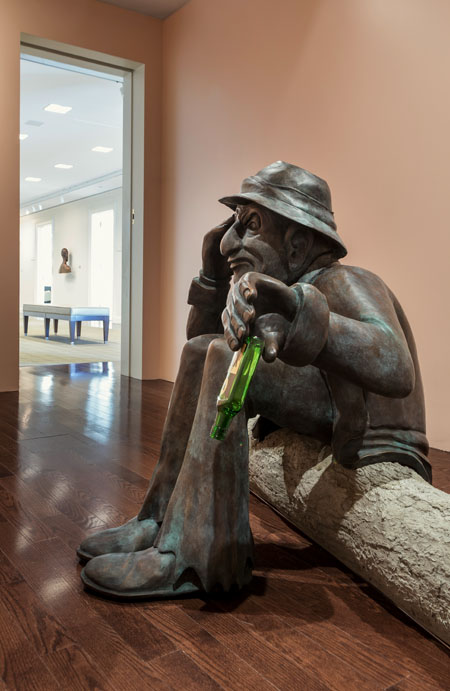
Later in 2009 for her Gold exhibition, MacLeod created a large installation called Everything seems empty without you, inspired by an image of a moonshine still on one of her postcards.4 Composed of seven wooden boxes made with recycled materials, the work strongly recalls Donald Judd’s plywood sculptures while incorporating the elements of a functional moonshine still, cleverly linking the process of distillation, which involves stages of purification in the production of alcohol, to minimalist art-making, where ideas and forms are reduced to their essence.5 Such work is indicative of MacLeod’s enduring interests in art as cultural tradition, art’s social and personal relevance, as well as the relationship between art and commerce.6
The Last Drop is the most recent project in Myfanwy MacLeod’s exploration of drinking and its relation to the great traditions of modernism. Based on a postcard image from 1906, this life-size bronze sculpture portrays an old-fashioned hobo sitting on a log, wearing a long waistcoat, tattered pants and misshapen hat. He holds a downturned, empty bottle in one hand, while the other rests on his temple, a look of comic dismay or desperation on his face. The room he occupies is painted pink, a colour long associated with drunken delirium and hallucinations.
The appearance of a down-on-his-luck vagrant in the context of a bank is unexpected, as is the artist’s choice to immortalize this tragicomic figure in bronze—the traditional High Art material of sculptural masterworks and public monuments. Myfanwy MacLeod often explores the ways an image or concept can be altered, transformed, or given new meaning when its context or form is changed. Like much of her work, The Last Drop addresses social, cultural and artistic clichés with irreverence and playful seriousness, wavering like the drunkard’s walk through an entropic universe.
—Dawn Cain, Curator, BMO Financial Group Corporate Art Collection
